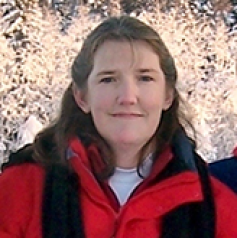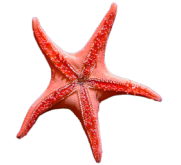
Carrie Goertz, M.S., D.V.M.
RESEARCH INTEREST:
Marine animals as sentinels for ocean and human health, comparative beluga whale health in particular how it facilitates understanding the endangered Cook Inlet population, how information and expertise about free ranging wildlife and those housed in zoological collections help each other.I was born in Washington DC but grew up in Chevy Chase, Maryland. At Lehigh University in Pennsylvania, I received an Air Force ROTC scholarship and obtained a degree in Electrical Engineering and thought that I was done with school. I was in the Air Force for seven years and obtained a master’s degree in Engineering Management from the University of Dayton, Ohio. After I left the Air Force, I decided to pursue a veterinary degree. What intrigued me about medicine was the same thing that intrigued me about engineering, namely understanding how things worked. While I picked up required prerequisites and a second bachelor degree in Biology at the University of Massachusetts at Boston, I also volunteered at a local zoo and worked part time for the Wildlife Clinic at Tufts Veterinary School. My first blood drawing experience was in the field, sampling colonial nesting birds. I traveled across the country to attend veterinary school at Washington State University but also pursued external aquatic animal experiences, attending AquaVet at Wood’s Hole and doing an externship at Point Defiance Zoo and Aquarium. After graduation, I moved back to the east coast and did a two year aquatic animal internship at Mystic Aquarium in Connecticut. At the University of New England in Biddeford, Maine I helped start a new stranding center for marine mammals and later at the University of Southern Maine I developed marine mammal cell cultures and investigated the effects of heavy metals on those cells. Wanting to return to spending more time working with whole animals and not just their cells, I crossed the country once again to accept a job at the Alaska SeaLife Center. As the Staff Veterinarian I assist with the preventative medicine program, research projects, and clinical care for birds, fish, and marine mammals including both captive and stranded animals.
Bowenkamp KE, Frasca S Jr, Draghi A, Tsongalis GJ, Koerting C, Hinckley L, De Guise S, Montali RJ, Goertz CE, St Aubin DJ, and Dunn JL. Mycobacterium marinum dermatitis and panniculitis with chronic pleuritis in a captive white whale (Delphinapterus leucas) with aortic rupture. Journal of Veterinary Diagnostic Investigation. 2001, 13(6): 524-30.
Goertz, CEC. Protozoal Diseases of Elasmobranchs. Elasmobranch Husbandry Manual Symposium. 2001. Pg 417-426.
Adams GP, Testa JW, Goertz CEC, Ream RR, and Sterling JT. Ultrasonographic characterization of reproductive anatomy and early embryonic detection in the northern fur seal (Callorhinus ursinus) in the field. Marine Mammal Science. 2007, 23 (2). Pg 445-452.
Holmes, AL, Wise SS, Goertz CEC, Dunn JL, Gulland FMD, Gelatt T, Beckmen KB, Burek K, Atkinson S, Bozza M, Taylor R, Zheng T, Zhang Y, Aboueissa AE-M, and Wise Sr JP. Metal tissue levels in Steller sea lion (Eumetopias jubatus) pups. Marine Pollution Bulletin. 2008, 56: 1416-1421.
Kucklick J, Pugh R, Becker P, Keller J, Day R, Yordy J, Moors A, Christopher S, Bryan C, Schwacke L, Goertz C, Wells R, Balmer B, Hohn A, Rowles. Specimen Banking for Marine Animal Health Assessment. Interdisciplinary Studies on Environmental Chemistry — Environmental Specimen Bank, Eds., T. Isobe, K. Nomiyama, A. Subramanian and S. Tanabe. 2010, 4: 15–23.
Goertz CEC and Mulcahy DM. Attempted surgical correction of single- and multiyear post-ovulatory egg stasis in yellow and red Irish lords, Hemilepidotus jordani (Bean) and Hemilepidotus hemilepidotus (Tilesius). Journal of Fish Diseases. 2011, 34, 75–79.
St. Leger JA, Righton AL, Nilson EM, Fascetti AJ, Miller MA, Tuomi PA, Goertz CEC, and Puschner B. Vitamin A Deficiency and Hepatic Retinol Levels in Sea Otters, Enhydra lutris, Journal of Zoo and Wildlife Medicine. 2011 42(1):98-104.
Goertz CEC, Frasca S, Bohach GA, Cowan DF, Buck JD, French RA, DeGuise S, Maratea J, Hinkley L, Ewalt D, Schlievert, Karst SM, Deobald CF, Aubin DJ, Dunn JL. Brucella sp. vertebral osteomyelitis with intercurrent fatal Staphylococcus aureus toxigenic enteritis in a bottlenose dolphin (Tursiops truncatus). Journal of Veterinary Diagnostic Investigation. 2011, 23 845-851.
Norman S, Goertz CEC, Burek-Huntington K, Quakenbush L, Cornick LA, Romano T, Spoon T, Miller WA, Beckett LA, and Hobbs R. Hematology and serum chemistry of wild beluga whales (Delphinapterus leucas) in Bristol Bay, Alaska, Journal of Wildlife Diseases. 2012, 48(1): 21-32.
Goertz, C What’s Up Doc? Why do some rehabilitated marine mammals get deemed non-releasable and placed in zoological facilities, and why is this important? Soundings. 2012, 37(4):8-9.
Counihan-Edgar K, Gill V, Doroff A, Burek K, Miller W, Shewmaker P, Jang S, Goertz C, Tuomi P, Miller M, Jessup D, and Byrne B. Genotypic Characterization of Streptococcus infantarius subspecies coli Isolates from Sea Otters with Infective Endocarditis and/or Septicemia and from Environmental Mussel Samples. J. Clin. Microbiol. 2012, 50(12):4131-4133.

